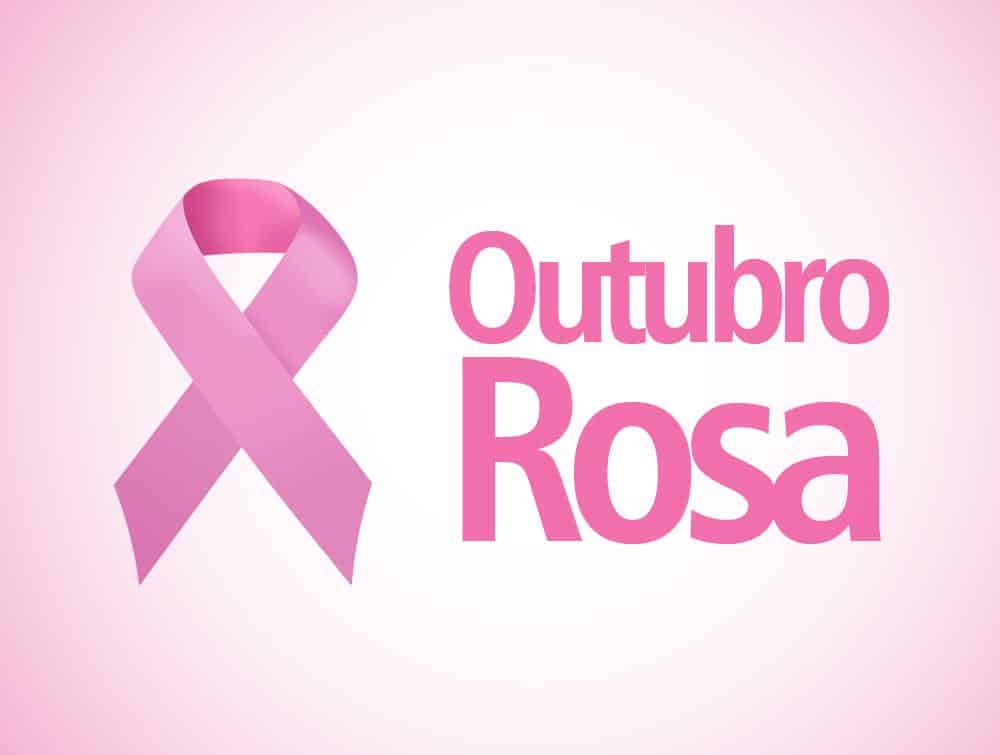Pink October is the month of the breast cancer awareness and prevention campaign. It is very important to know how to do a breast self-examination.
Pink October is an awareness campaign. The objective of which is to alert women and society about the importance of prevention and early diagnosis of breast cancer. Furthermore, the campaign encourages and teaches how to perform breast self-examination.
In short, to perform a breast self-examination you only need to follow three steps: observation in front of the mirror, palpating the breast while standing up and then lying down. Furthermore, the ideal is to carry out a self-examination once a month, every month. Preferably, between the 3rd and 5th day after menstruation. During this period, the breasts are more flaccid and painless.
In the case of women who no longer menstruate, simply choose a fixed date to do a breast self-examination. Anyway, even though it doesn’t make an accurate diagnosis of cancer, self-examination helps women get to know their body better. This way, it is easier to notice changes that may appear in the breast.
Therefore, self-examination is recommended for women after 20 years of age, who have a case of breast cancer in the family. Or for women over 40, who do not have cases of cancer in the family. However, men can also perform self-examination. Because they can also suffer from this type of cancer, they even have similar symptoms.
How to do a breast self-exam: importance

Currently, breast cancer is the main cause of cancer deaths in women in Brazil. Therefore, it is very important to know how to do a breast self-examination and get to know your own breast in detail. Because, with it, it is possible to detect the disease early, paying attention to any type of change.
According to research, around 80% of breast tumors are discovered through self-examination. Which is suitable for women aged 20 and over. In the case of women over 40 years of age, in addition to the monthly self-examination, it is recommended to have a mammogram annually. The exam allows you to identify possible injuries that are not detected when palpating the breasts.
Although it is more common in menopausal women (between 45 and 55 years old), benign nodules can appear at any age. Who also need treatment. Therefore, the sooner you identify them, the sooner the treatment will be. Finally, it is very important to consult your gynecologist annually. In addition to paying attention to any changes, secretions or pain that arise.
Furthermore, early diagnosis of breast cancer allows less aggressive treatment to be carried out, increasing the chances of a cure.
How to do a breast self-exam: step by step
To perform a complete breast self-examination you need to follow 3 steps. First, in front of the mirror, then standing and finally lying down.
1- In front of the mirror
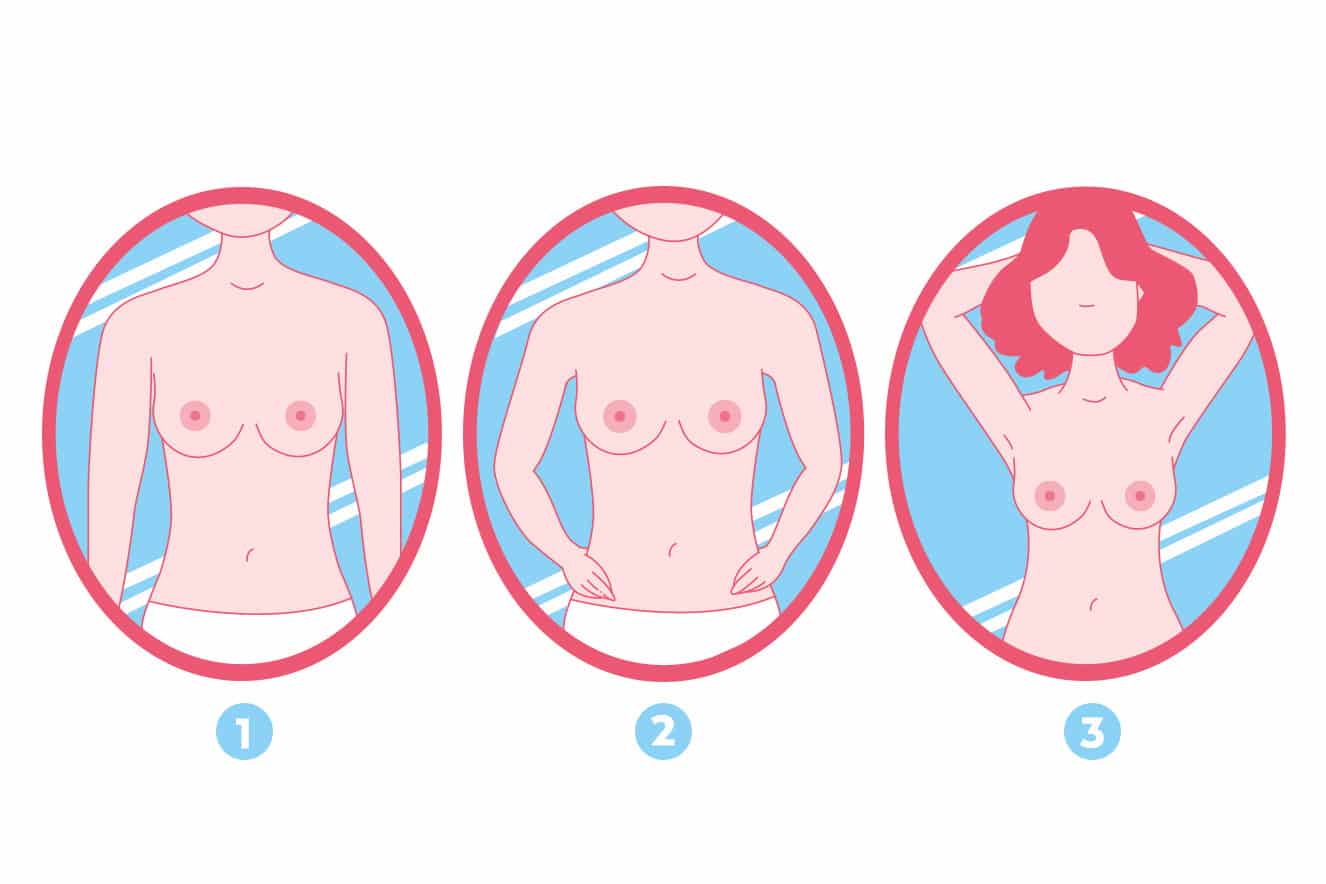
In short, stand in front of the mirror, remove your blouse and bra. So, observe carefully, evaluating the size, shape and color of the breasts. In addition to possible swelling, lowering, protrusions or some roughness. As well as the appearance of any changes compared to the self-examination carried out previously. To do this, follow the following steps:
- With your arms hanging down, observe the shape and contour of your breasts.
- Continue watching, now with your arms on your waist.
- Furthermore, look for changes in the skin around the breast, areola and nipple.
- So, check if your bra leaves marks on just one breast. Yes, it may indicate that the breast is swollen.
- Finally, raise your arms and observe if there are any changes. Then, place your hands on the sink and apply pressure, observing whether any changes appear in the breast.
2- Standing
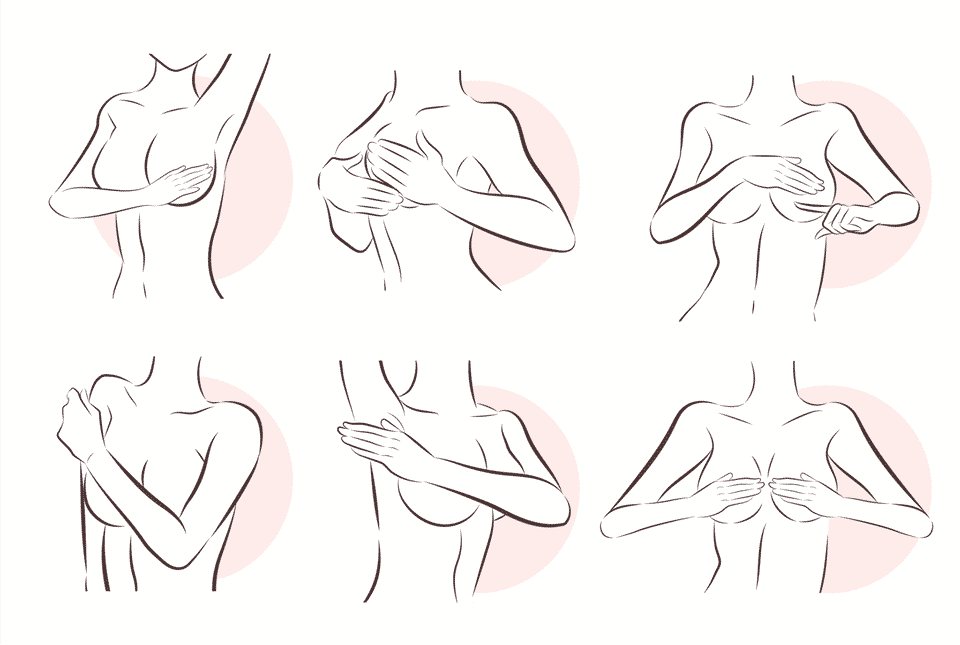
This stage of self-examination should be done during the shower, with your body wet and your hands soapy. In short, to perform a breast self-examination, the fingers of your hand must be together and stretched out. Right away:
- With your body upright, raise your left arm and place your hand behind your head.
- Now, start palpating the breast with the other hand, making circular movements. But, do it all over the breast and then, from top to bottom.
- Then, lower your arm and raise your right arm, repeating the entire process. Remembering that, while palpating the breast, you must check for changes. For example, denser parts or lumps.
- When you have finished palpating, press the nipples gently, observing whether there is any discharge.
- Furthermore, it is important to make the same movements in the armpit area, checking for the presence of any lumps.
3- Lying down
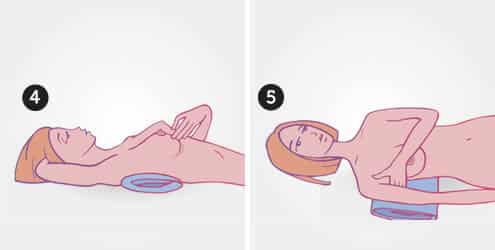
Finally, the last step must be done lying down. That way:
- First, lie down and place one of your arms behind your neck, if you want, place a pillow under your shoulder to make yourself more comfortable.
- Then, start palpating the entire breast, using the same circular movements as in step two. When finished, repeat the process on the other breast.
Finally, if during one of the three stages of the breast self-examination, you find any type of change, the presence of nodules or secretions, see a gynecologist or mastologist. Only they will be able to make an accurate diagnosis and recommend the most appropriate treatment.
How to do a breast self-exam: warning signs
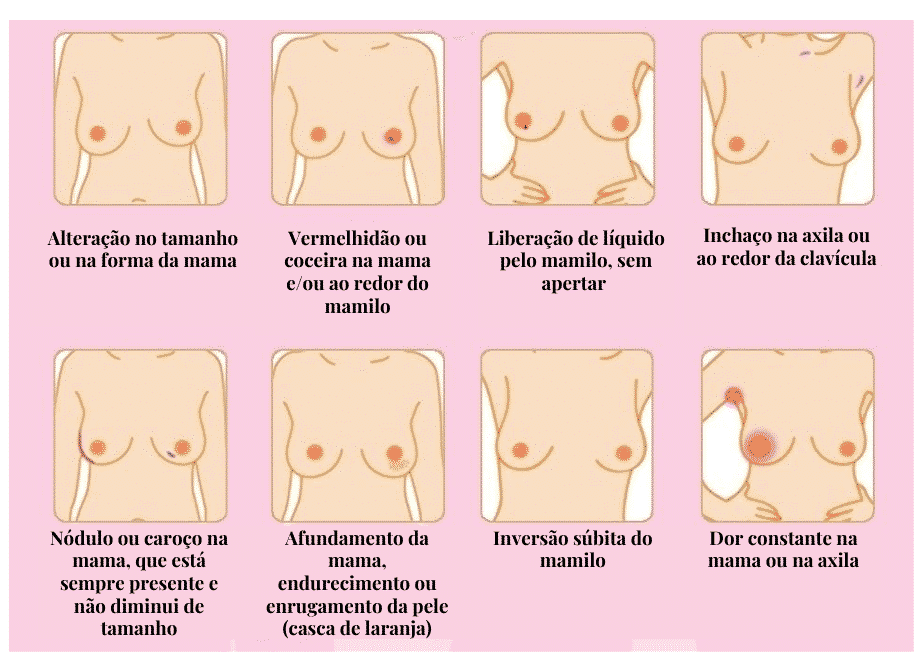
Generally, breast cancer can be detected by the presence of a hard, irregular lump or nodule. Furthermore, it does not always cause pain. Therefore, it is important to know how to perform a breast self-examination and repeat it monthly.
Well, it’s an excellent way to get to know your own body. This helps to identify changes, including the development of cancer. Giving the opportunity for an early diagnosis, increasing the chances of a cure.
However, when many women identify changes, they tend to become very anxious and worried. But, be aware that the presence of small nodules in the breast is relatively common. Therefore, it does not indicate that it is cancer that is developing.
However, it is necessary to observe whether these nodules increase in size or are accompanied by other symptoms. Such as:
- Changes in the skin of the breast;
- Redness or changes in the color of the breast;
- Swelling or change in shape;
- Liquid secretion from the nipple (as long as you are not breastfeeding);
- Irritated nipple, with redness, itching or burning;
- Appearance of small lesions or wounds in the breast;
- Breast features sunken locations;
- Lump noticeable to the touch;
- Dilation of a vein or increase in breast size.
- Change in skin texture. In this way, wrinkles or cellulite may appear;
- Nipple inversion (changing position or turning inward);
- Pain in the breast or armpits.
How to do a breast self-examination: how to proceed

You already know how to do a breast self-exam. But what to do when you find any changes? Firstly, stay calm and stay calm. Well, most lumps tend to be benign. It could be a sebaceous cyst or inflammation of the glands.
However, this does not mean that it should not be analyzed by a specialist. Therefore, look for a mastologist or a gynecologist. Therefore, both can perform a physical examination and request a mammogram to investigate further.
Anyway, the important thing is that you take care of yourself, take precautions and, for this, it is important to not forget to do a breast self-examination. In addition, try to adopt a healthy lifestyle, practicing physical exercise, consuming less alcohol, avoiding cigarettes and maintaining a balanced diet.
So, if you liked this article, you will also like this one: 8 symptoms of breast cancer that go far beyond the lump.

Sign up for our newsletter and stay up to date with exclusive news
that can transform your routine!
Warning: Undefined array key "title" in /home/storelat/public_html/wp-content/plugins/link-whisper-premium/templates/frontend/related-posts.php on line 12
Warning: Undefined array key "title_tag" in /home/storelat/public_html/wp-content/plugins/link-whisper-premium/templates/frontend/related-posts.php on line 13

